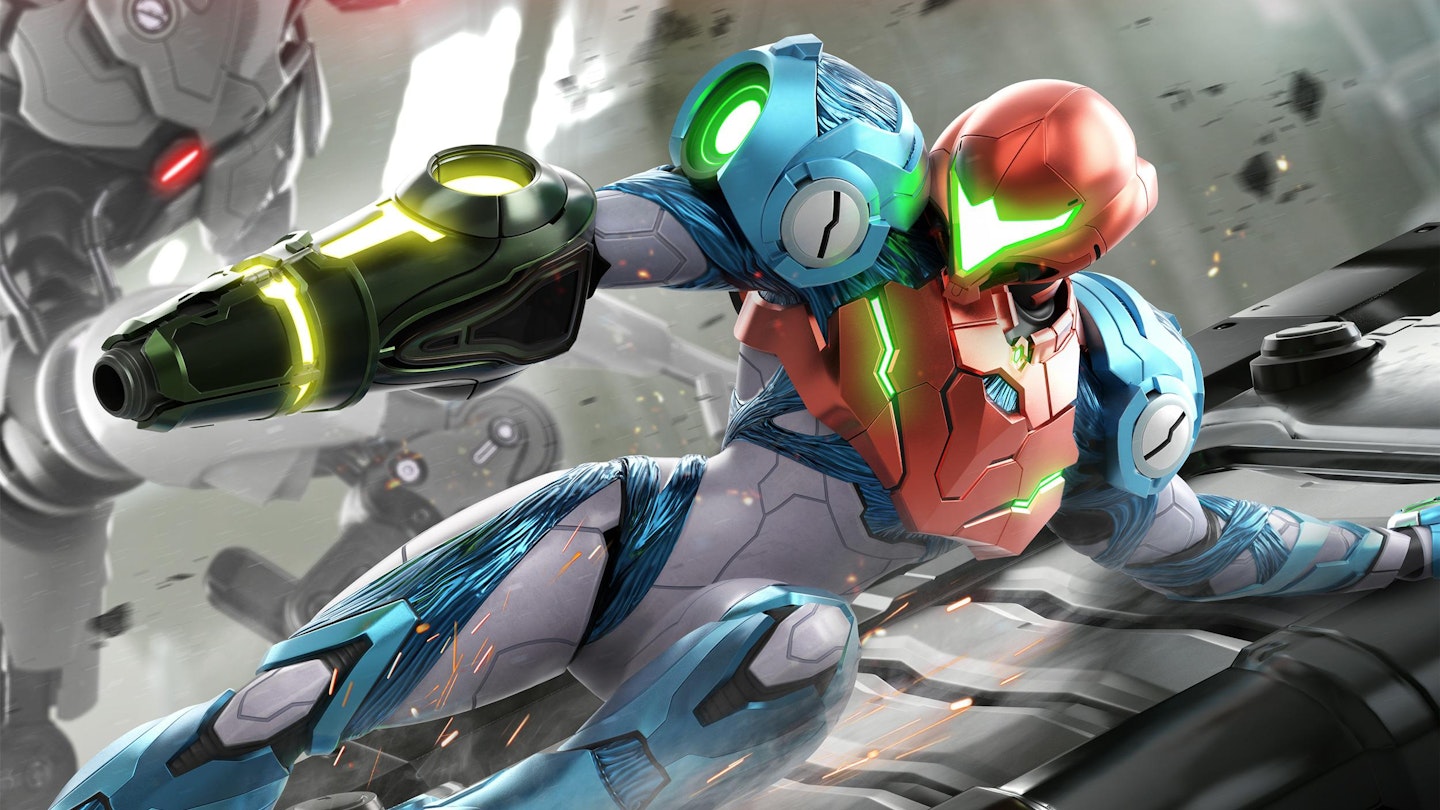Platform: Nintendo Switch
For one of Nintendo's most recognisable franchises, Metroid is also one of its most regularly absent. It's been four years since the last game in the series, Metroid: Samus Returns, was released – itself a remake of 1991's Metroid II: Return Of Samus – and a staggering 11 years since the last brand new entry, Metroid: Other M, graced the Wii. To call Metroid Dread overdue would be an understatement.
Within the series' winding, anachronological timeline, Dread comes after 2002's Metroid Fusion, and is the latest adventure for bounty hunter Samus Aran. That places considerable weight on the shoulders of developers MercurySteam – moving the greater mythos along while still remaining indelibly a Metroid game is no small ask. Thankfully, the end result rises to the challenge.

Metroid Dread offers a return to the series' classic 2D action-platforming roots, with Samus exploring another strange world on the galactic rim, known only as ZDR. It's a moody, atmospheric planet, full of savage creatures and rogue robots that would all prefer Samus not remain breathing. Samus is drawn to ZDR by footage of surviving X Parasites – a cosmic-level threat to all life, thought eradicated during the events of Fusion. True to tradition though, Samus crashes on the planet – albeit under unknown circumstances – and awakens to find herself devoid of all abilities once more.
"There are plenty of new twists to enjoy.
It's a repeat of a formula the series has always used well, reigniting the archetypal search for abilities and power-ups that subsequently unlock more areas to explore. If Metroid games came out more frequently, it might be frustrating to have to rebuild Samus' arsenal over and over, but here it feels satisfying and familiar for returning players, while providing a perfect introduction for newcomers. Even better, it tells one of the strongest stories in the series' canon, diving into largely unexplored lore and tying together plot threads that have stretched across literal decades.
Where Dread does fall down slightly, at least for those returning players, is just how much it feels like a remix of Metroid's greatest hits. Regular enemies populating the corridors and caverns of ZDR are too often revamps of grunt foes in previous games, while even long-defeated bosses make a return. There are more than a few moments scattered throughout that feel more like fan-service than knowing winks.

Fortunately, there are plenty of new twists to enjoy too. While Samus' traditional powers return — such as her power beam attack, grappling line, and signature ability to transform into a morph ball – they're joined by new skills to aid navigation and combat. Most of these fall under the remit of "Aeion" abilities, and include Flash Shift, providing instantaneous movement to cross gaps or dodge attacks, and Phantom Cloak, allowing her to turn fully invisible at the cost of some movement speed and manoeuvrability.
The stealth implications of Phantom Cloak in particular tie in perfectly with what is undoubtedly the biggest departure from classic Metroid games – the introduction of the E.M.M.I. droids, reconnaissance robots sent to ZDR ahead of Samus but corrupted by some unknown force before she arrives. Players will encounter these sinister quadrupedal machines skittering around defined hunting grounds, relentlessly chasing Samus if detected and utterly undefeatable by regular means. Dodging their radar or hiding while invisible is the only way to pass through active E.M.M.I. Zones, adding some thrilling and tense encounters to the usual Metroid format.
The sense of satisfaction when an E.M.M.I. is finally dispatched – each time a sort of two-part boss encounter, where you'll need to find your way to a command centre in the E.M.M.I. Zone, defeat its guardian to temporarily gain a power boost, and then survive long enough against the mechanoid predator to unleash phenomenally damaging weapons against it – is immense though. It also loops back into Metroid's core of exploration, making the E.M.M.I. Zones safer to travel through afterwards.
Throughout this mix of new and old, MercurySteam manages to provide the perfect balance of challenge and temptation. Initially locked off areas call to players, begging them to return when a new ability allows them to be accessed, overcoming any frustration of being lost in ZDR's labyrinths or stuck on a particularly tough boss. Similarly, even simple navigation feels fantastic, every block or ledge precisely placed so only the perfect application of skills can reach them. Pulling off a perfect Sparkshine for the first time – a sort of superspeed leap that can rocket Samus through obstacles – is worthy of a little fist pump.
While a segment of the fandom may still be wanting another 3D Metroid in the vein of the Prime trilogy, Dread really shouldn't be overlooked. It embraces the series' 2D roots but also moves the saga forwards, both narratively and in gameplay terms with its tense E.M.M.I. sections. While Dread blurs the line between nostalgia and pandering at times, it's still a more than welcome return.
